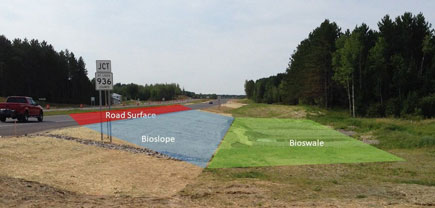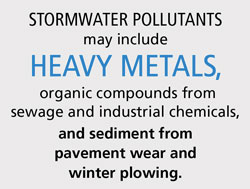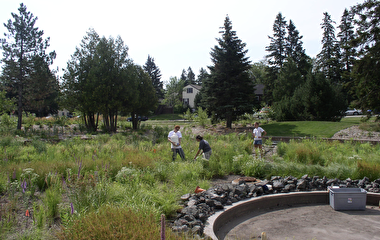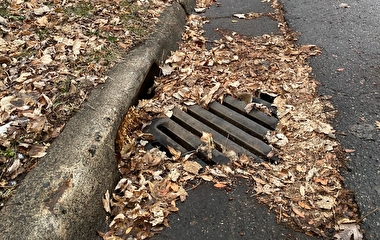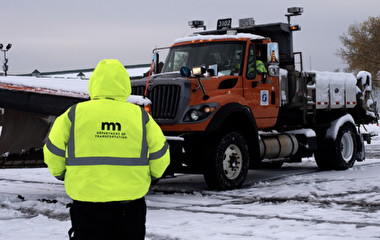meeting national and state pollution regulations, which require
retaining the first inch of runoff during rainstorms.
University of Minnesota Duluth (UMD) researchers are identifying new ways for transportation agencies to meet regulatory requirements for stormwater runoff. In a recent project, researchers evaluated the use of peat and muck excavated from construction activities, taconite tailings from mining operations, and other stormwater filter media for use in bioswales and bioslopes along northeastern Minnesota highways.
“During rainstorms, water flows across highway pavement until it reaches a stream or patch of soil, but along the way, this runoff often picks up pollutants,” says Kurt Johnson, a research fellow with the UMD Natural Resources Research Institute. “To help highway drainage ditches absorb and filter stormwater before it reaches streams, these ditches are sometimes amended with materials such as a compost and sand mixture to create bioslopes and bioswales. However, hauling these materials to roadway construction sites can be very expensive.”
To contain these costs while continuing to address environmental challenges, the Minnesota Department of Transportation (MnDOT) funded Johnson’s research team to find alternative materials that are just as effective for biofiltration, but can be sourced close to construction sites and recycled from construction or industrial byproducts.
Researchers selected three locally available materials to determine whether they are suitable for use in bioswales and bioslopes. These were two byproducts often generated by excavation during roadway construction—peat (partially decomposed plant matter) and muck (a mixture of organic matter and clay)—as well as taconite tailings, a mining byproduct that could potentially replace sand.
After collecting the products, researchers conducted laboratory experiments to determine how well they absorbed water, retained pollutants, and sustained plant growth. Then, they conducted field tests to determine how well these materials worked in real-world scenarios.
“Ultimately, we found that a combination of peat and taconite tailings compared favorably with current MnDOT specifications for bioslope and bioswale designs,” Johnson says. “While muck showed little potential for this application, the other two materials performed well in terms of infiltration, pollution retention, and plant growth.”
According to Dwayne Stenlund, an erosion control specialist with MnDOT’s Erosion Control and Stormwater Management Unit, these findings will help protect the environment while saving money. “The results of this project will very much facilitate the development of green infrastructure by reducing its cost to MnDOT and Minnesota local agencies, helping them to do more with less.”
